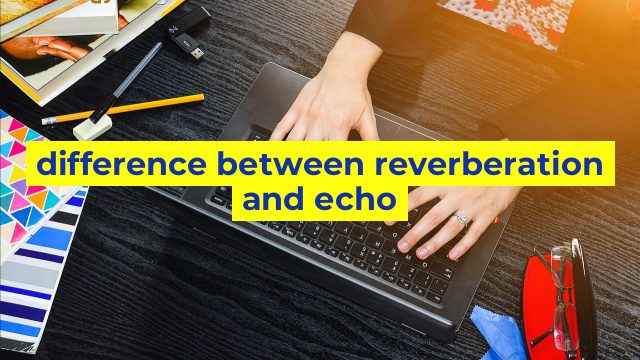The Difference Between Reverberation and Echo
When it comes to sound, two terms that are often used interchangeably but are actually very different are reverberation and echo. Understanding the difference between these two concepts can help you better understand and control the sound in your environment.
What is Reverberation?
Reverberation is the persistence of sound in an enclosed space after the source of the sound has stopped. This occurs due to the repeated reflections of sound waves off of surfaces such as walls, floors, and ceilings. In other words, it is the sound that bounces around in a room after the source of the sound has stopped. The amount of reverberation in a space can be affected by the size and shape of the room, the materials used to construct the surfaces, and the presence of objects within the space.
Reverberation can be both positive and negative. On the positive side, it can make music or speech sound richer, fuller, and more natural. However, too much reverberation can make it difficult to hear and understand speech, and can cause a feeling of discomfort or disorientation.
What is Echo?
Echo, on the other hand, is a distinct sound reflection that occurs when sound waves bounce back off a distant surface, and return to the listener. Echoes are heard as distinct repetitions of the original sound, occurring a short time after the sound source.
While both echo and reverberation are caused by sound reflections, the key difference is that reverberation is a continuous repetition of sound waves in a confined space, whereas an echo is a single, distinct repetition of a sound wave. Echo is usually associated with open, outdoor spaces or large rooms, and are generally considered to be unwanted sound reflections in those environments.
The Importance of Understanding Reverberation and Echo
Understanding the difference between reverberation and echo is crucial when designing or treating a room for proper acoustics. Too much echo or reverberation can negatively impact sound quality in a space, causing speech intelligibility issues, mood disturbances, and other problems.
Using sound-absorbing materials such as acoustic panels, can help reduce the amount of reverberation in a room, and prevent echoes from distorting the sound quality. This ensures a more balanced, and comfortable listening experience, for any applications ranging from speech presentations, music productions, or even home theaters.
In conclusion, reverberation and echo are two different sound phenomena that can impact the quality of sound in an environment. Understanding the causes and differences between these terms can help you create a space with better acoustics, and ensure a more enjoyable listening experience.
Table difference between reverberation and echo
| Reverberation | Echo |
|---|---|
| Reverberation is the persistence of sound in a space after the sound has been produced. | Echo is the repetition of sound caused by a reflecting surface that reflects sound waves back towards the source. |
| Reverberation is the combination of the original sound with its multiple reflections within a space, creating a complex sound field. | Echo is a single repetition of the original sound, which is delayed due to the time it takes for the sound to travel from the source to the reflecting surface and back to the listener. |
| Reverberation occurs naturally in most environments and can be controlled through the use of acoustic treatments such as absorption and diffusion. | Echo can be deliberate or unintentional and is often used in musical productions for artistic effect. |
| Reverberation can enhance sound clarity and add depth to musical performances. | Echo can give a sense of space and distance in a recording, but can also obscure the clarity of the original sound. |
| Reverberation is a measure of the time it takes for sound to decay by 60 dB after the initial sound has stopped. | Echo can be measured in terms of delay time or reflection coefficient. |
